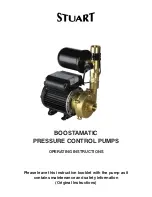
6
MAIN FEATURES
Description of the components
Hydraulic and chilling circuit components:
1. One-way valves (heat pump unit), allow the coolant to pass into the appropriate exchangers, depending on the
operating cycle.
2. Low pressure switch, with fixed setting. This is installed on the intake pipe and blocks the compressor if the ope-
rating pressure drops below the preset values. It automatically resets when the pressure increases. If the pres-
sure switch activates too frequently, the unit blocks and may only be restarted following a reset via the user ter-
minal.
3. High pressure switch, with fixed setting. This is installed on the delivery pipe and blocks the compressor if the
operating pressure rises above the preset value. If it activates, the unit blocks and may only be restarted follo-
wing a reset via the user terminal.
4. Thermostatic valve, of the external equalizer type. Used in the heat pump mode. it feeds the evaporator cor-
rectly, keeping the set degree of overheating at a constant level.
5. Capillary. Used in the cold mode. Carries out the same function as the thermostatic valve, the only difference
being that the capacity to monitor overheating is less accurate than with the thermostatic valve.
6. Water differential pressure switch. This is part of the standard supply and is installed on the connections bet-
ween the water inlet and outlet of the exchanger. If it activates frequently, the unit blocks and may only be restar-
ted following a reset via the user terminal.
7. 4-way cycle reversal valve (heat pump units), reverses the direction in which the coolant flows as the sum-
mer/winter operating mode is changed.
8. Fluid receiver (heat pump unit), this is a plenum tank that accounts for variations in the coolant charge the machi-
ne must supply as the summer/winter operating mode varies.
Fig.1
Summary of Contents for RPA 16
Page 14: ...14 DIMENSIONS Overall dimensions of the units Mod 16 19 Mod 24 30 Mod 38 42 50...
Page 19: ...19 ELECTRICAL CONNECTIONS Wiring diagram for models 24 30 2 38 2...
Page 20: ...20 ELECTRICAL CONNECTIONS Wiring diagram for models 30 3 38 3 42 3 50 3...
Page 42: ...42...
Page 44: ...NOTE...
Page 45: ...NOTE...
Page 46: ...NOTE...







































